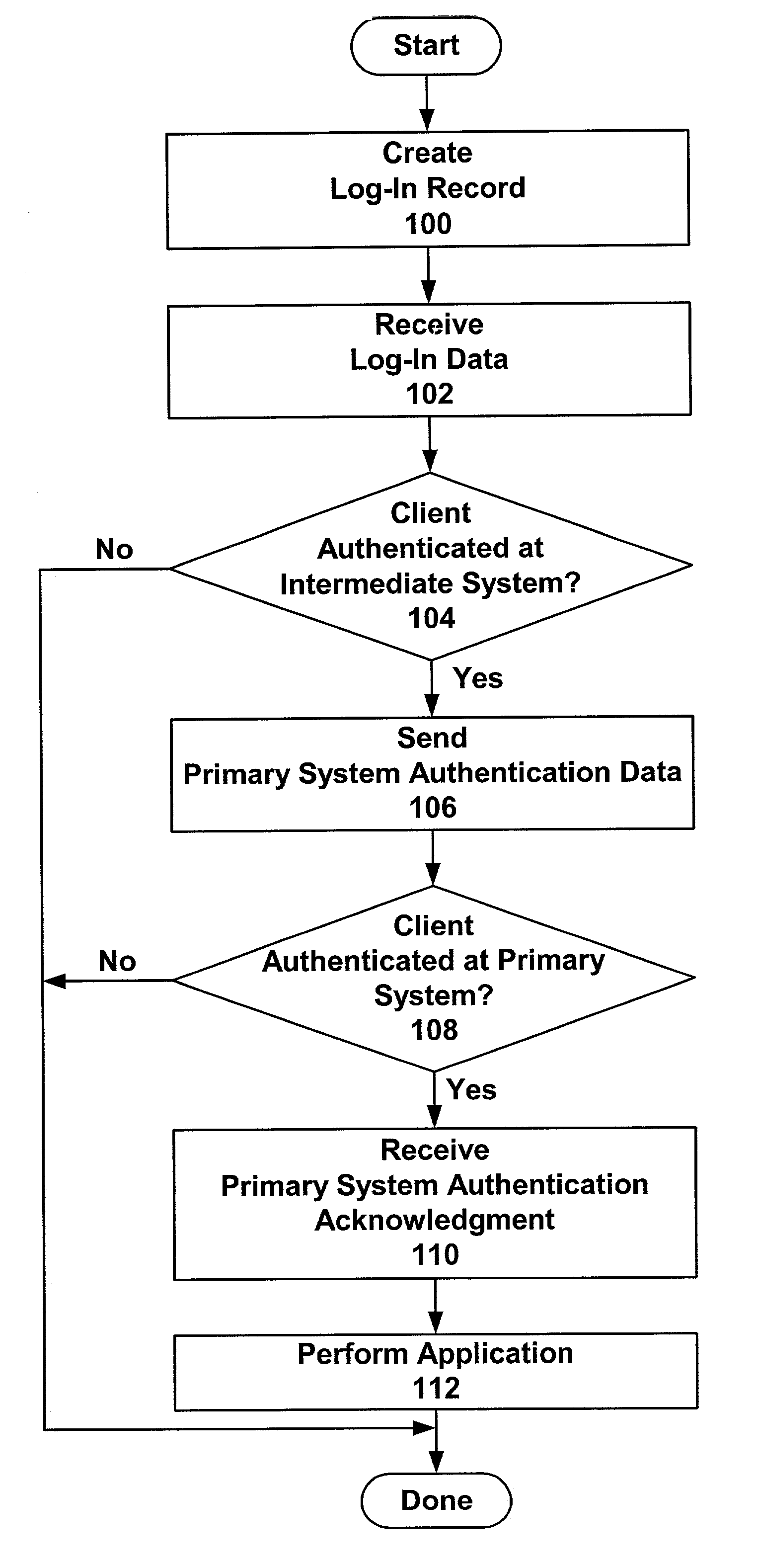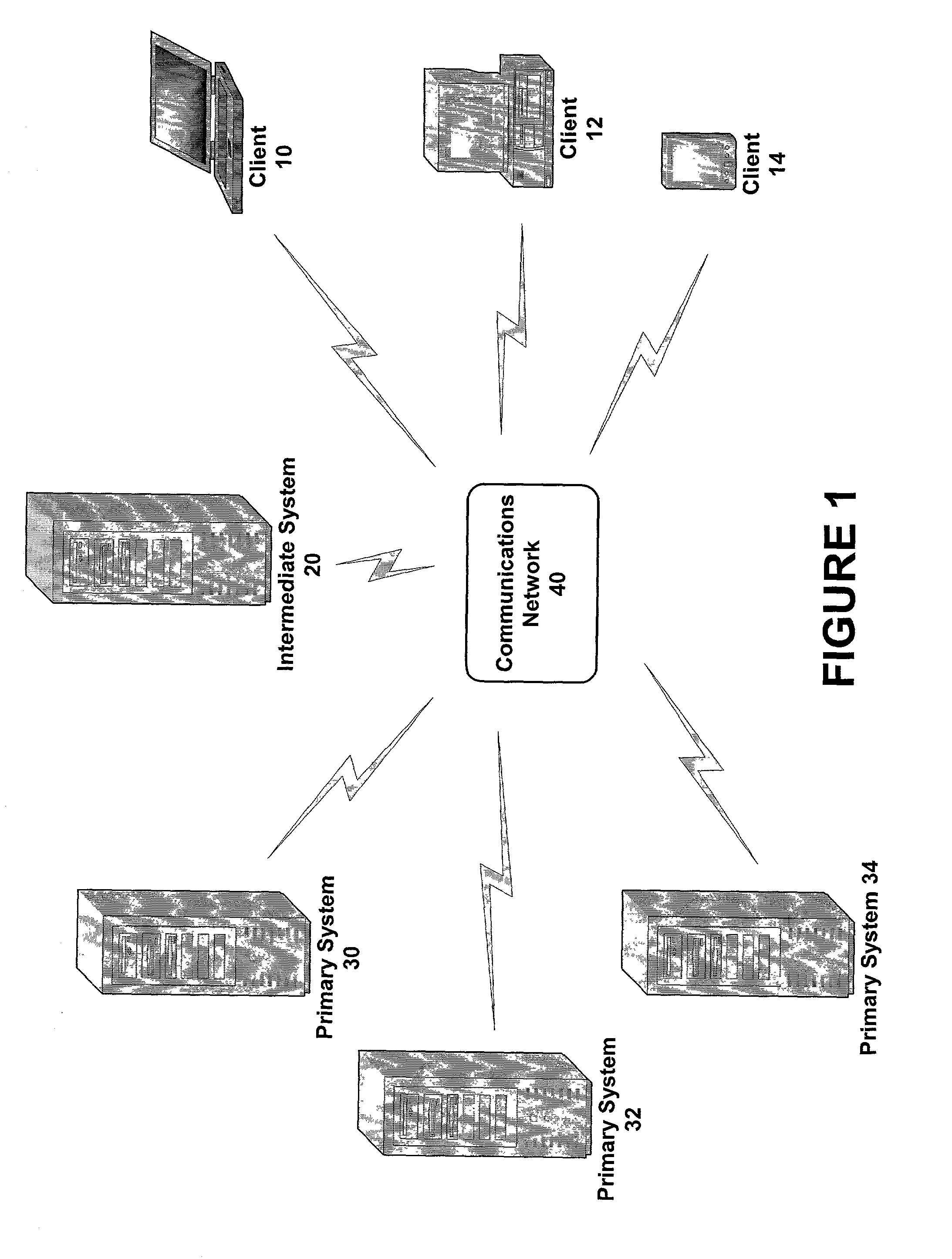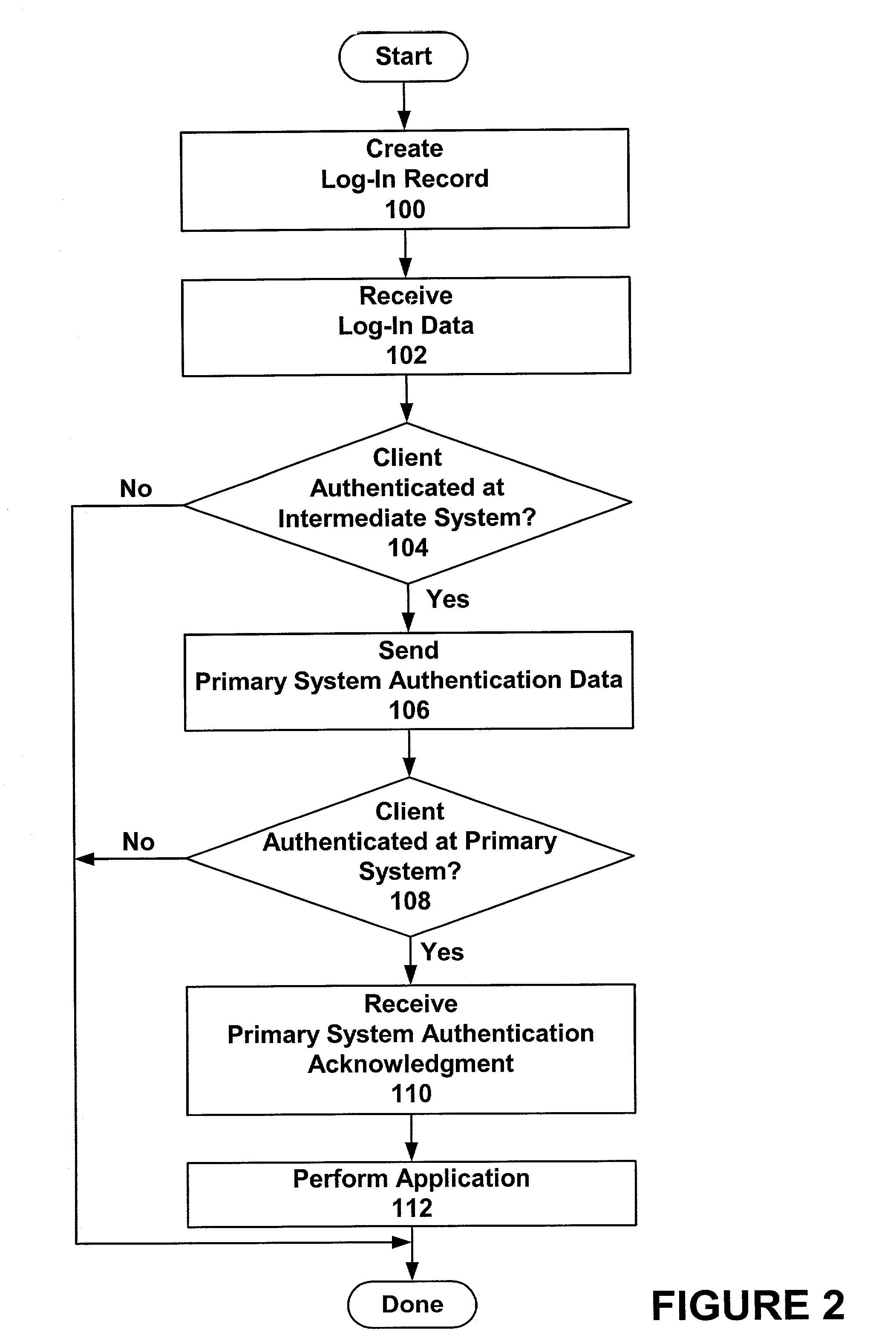Secure authentication of users via intermediate parties
a technology of intermediate parties and user authentication, applied in the field of secure computer communication, can solve the problem of significant preventing computer hackers from stealing client authentication information
- Summary
- Abstract
- Description
- Claims
- Application Information
AI Technical Summary
Benefits of technology
Problems solved by technology
Method used
Image
Examples
first embodiment
B. Using A Non-Encrypted PSCI Value
[0035]In a first embodiment of the present invention, PSCI is a non-encrypted value containing client identifier CID and client password CPW. Intermediate system 20 decrypts E(PSCI) to obtain the CID and CPW values when authenticating a client's access rights (step 104). Intermediate system 20 then sends the CID and CPW values to a primary system (step 106) for use in authenticating the client (step 108). This embodiment is described in more detail below.
[0036]In creating a log-in record for a client (step 100), intermediate system 20 receives PS, CID, and CPW values from the client's primary system. The CID and CPW values combine to form the PSCI. Intermediate system 20 assigns the client an ICID value and an intermediate system client password (“ICP”). In some embodiments, the ICID and / or ICP are submitted by a client prior to their assignment by intermediate system 20. Using the above-identified values, intermediate system 20 generates the log-...
second embodiment
C. Using A PSCI Value that is Encrypted
[0049]In a second embodiment of the present invention, PSCI is an encrypted value. Intermediate system 20 decrypts E(PSCI) when authenticating a client's access rights (step 104). The decryption yields the encrypted PSCI value. Intermediate system 20 then sends the encrypted PSCI value to a primary system (step 106) for use in authenticating the client (step 108). During the authentication, the primary system decrypts PSCI to obtain a CID client identifier and CPW client password. Using an encrypted PSCI value eliminates the transfer of decrypted CID and CPW values by intermediate system 20 on network 40. This embodiment is described in more detail below.
[0050]In creating a log-in record for a client (step 100), intermediate system 20 receives PS and PSCI values from the client's primary system. The PSCI value is an encryption of the CID and CPW for the client. In one implementation PSCI is expressed in detail as F((CID|CPW), K), wherein:[0051...
third embodiment
D. The Intermediate System is Unable to Verify Decryption of E(PSCI)
[0060]In a third embodiment of the present invention, intermediate system 20 cannot verify the decryption of the E(PSCI) field in a client log-in record. Intermediate system 20 authenticates the client's access rights (step 104)—determining whether ICID and PS values supplied by the client correspond to a client log-in record. Intermediate system 20 sends the encrypted E(PSCI) value to a primary system (step 106) for use in authenticating the client (step 108). During the authentication, the primary system decrypts E(PSCI) to obtain a CID client identifier and a CPW client password. Sending the E(PSCI) value to the primary system further reduces the exposure of the PSCI value on network 40. This embodiment is described in more detail below.
[0061]In creating a log-in record for a client (step 100), intermediate system 20 receives PS and PSCI values from the client's primary system. The PSCI value is an encryption em...
PUM
 Login to View More
Login to View More Abstract
Description
Claims
Application Information
 Login to View More
Login to View More - R&D
- Intellectual Property
- Life Sciences
- Materials
- Tech Scout
- Unparalleled Data Quality
- Higher Quality Content
- 60% Fewer Hallucinations
Browse by: Latest US Patents, China's latest patents, Technical Efficacy Thesaurus, Application Domain, Technology Topic, Popular Technical Reports.
© 2025 PatSnap. All rights reserved.Legal|Privacy policy|Modern Slavery Act Transparency Statement|Sitemap|About US| Contact US: help@patsnap.com



